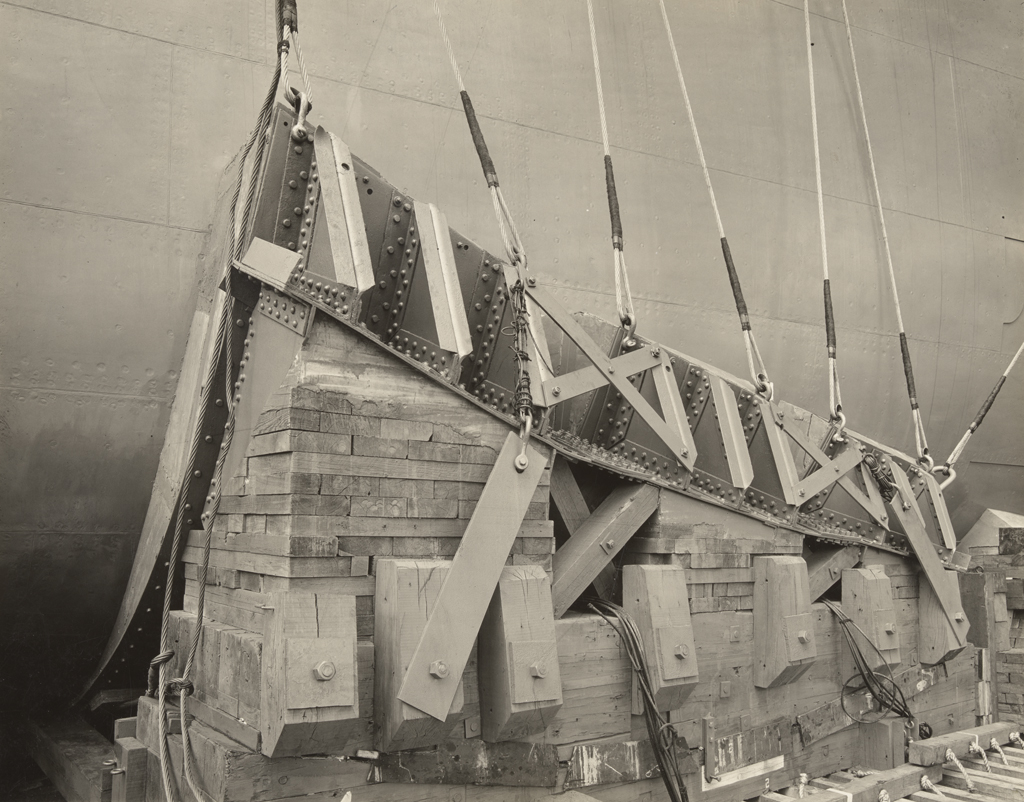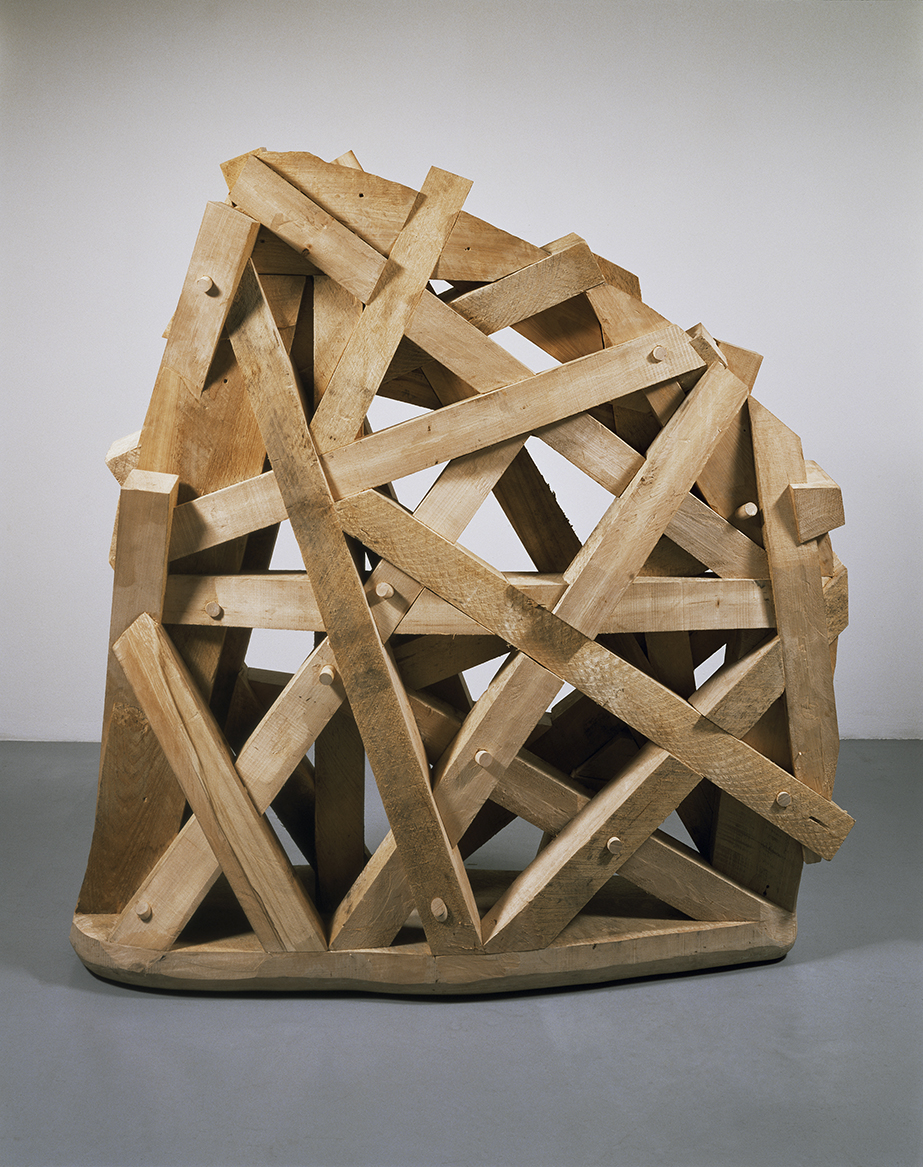
Even though I work in a maritime museum, my art training still brings a sense of wonder to certain images. I know that this photograph is documenting a step in a process, but this was not my initial response to this image.
In the case of this photograph, I saw it first as sculpture. Not as utilitarian support. Not as a temporary object. I looked at the overall shape, the materials, and how they were used. I appreciate the photographic composition and the black and white tones. Then, I began to consider its intended use.
Creating Connections
This image reminded me of the work of Martin Puryear, a sculptor whose work I first saw some years back. The essence of his work is form and material. The shape of a sculpture may suggest a variety of meanings, but one is never confused that the work is made of, in this case, wood.
Look at Martin Puryear’s Thicket (1990). His use of rough-hewn wood and almost haphazard construction relates to the use of materials in our photograph. And in both cases, the overall shape of the piece is suggestive of something, even if it is not easily defined.
Elisabeth Smith, collection & provenance associate at the Seattle Art Museum, writes: “From a young age Puryear was fascinated by how things are made, and would often construct his own objects from wood—whether it be a guitar or a canoe.” Thicket, she says, “is inspired by the shape and volume of a small rock Puryear found while on a trip to the Alaskan wilderness in 1980. Interwoven basswood and cypress give the piece a complex, tangled appearance.”

So, what is this photograph of exactly?
In shipbuilding, launch cradles ensure that the ship will safely and successfully slide down the ways during a launch. The photograph at the top is a close view of a fore poppet, made to fit the bow of the ship and must carry a load of about 20% of the ship’s total weight. (Eric C. Tupper) This poppet was built for the Battleship Arizona (BB-39), built at the New York Navy Yard in 1915.

Are you reminded of a similar connection you made to an artwork or photograph? Please share in the comments section. We love seeing these connections being made within our own Collections, while connecting to other pieces of art throughout the world.
For more on the Battleship Arizona: https://catalogs.marinersmuseum.org/search?search_catalog=Archives&query=USS%20Arizona
For more on Martin Puryear, enjoy this 14-minute interview from Art21.
Sources
Elisabeth Smith. Accessed February 18, 2022, https://samblog.seattleartmuseum.org/2019/02/thicket/
Eric C. Tupper. Accessed February 14, 2022, https://www.sciencedirect.com/topics/engineering/sliding-way#:~:text=Launching%2C%20Docking%20and%20Grounding&text=Because%20of%20the%20ship’s%20form,the%20end%20of%20the%20ways.